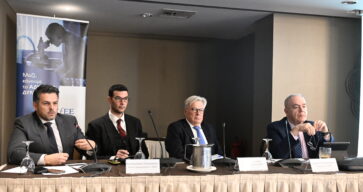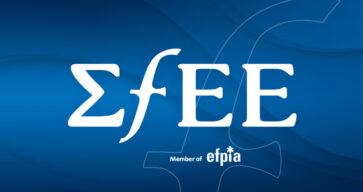Biological Pharmaceutical Products
Biological medicinal products (biologics or biopharmaceuticals) are large protein molecules, the production of which requires a complex process, which crucially determining the final characteristics of the specific product. The production process is unique for each biological product, whether a reference or a biosimilar medicine, and is a decisive factor for its safety, quality and efficiency, as it affects the qualities of the final product.SUMMARY Biologic pharmaceutical products (biologics) are complex protein molecules’, manufacturing of biologics requires a complicated process and the product’s final characteristics totally depend on the manufacturing process followed each time. The manufacturing process is unique for each biologic pharmaceutical product, whether this is a reference product or a biosimilar one; furthermore, the manufacturing process is totally related to the safety, quality and efficacy of the product. Special reference should be made to the fact that biologics are characterized by their large size compared to chemical medicinal products, are much more likely to cause allergies (protein nature) and much more active (antibodies) with regards to their anticipated and non- anticipated effects. Slight changes in the manufacturing process may lead to treatment failure or to development of adverse events. Driven by the need to ensure the most beneficial therapeutic solution for the patient with biologic medicinal products, this letter summarizes SFEE’s proposal regarding the scientific and legal framework for the use of biologic products..
- Biologics are not identical to biosimilars
- Biosimilars are not generics
- Interchangeability and automatic substitution among reference biologic products and biosimilars should not be allowed.
- Prescription of reference biologics and biosimilars should be performed by the products brand name which ensures efficient safety monitoring and allows traceability of the product used by the patient. The pricing system and principles followed for the biologic original pharmaceutical products must be applicable to the biosimilars ones
- Because of the non-interchangeability and non- automatic substitution between biologics reference products and biosimilars, tenders among those pharmaceutical products should not be applicable
1. Biologic and biosimilar products • Biologic pharmaceutical products (biologics) are complex protein molecules, manufacturing of biologics require a complicated process and the product’s final characteristics totally depend on the manufacturing process followed each time. The manufacturing process is unique for each biologic pharmaceutical product, whether this is a reference product or a biosimilar one; furthermore, it is totally related to the safety, quality and efficacy of the product. If this manufacturing process is slightly modified, this can lead to the production of a different protein molecule (biological agent) thus altering both therapeutic results and product safety. • The unique status of these products is proven by the fact that there is no reference made to products under this category in the community provisions regarding the drug patent protection. • Biosimilars are biologic equivalents of biologics, ie manufactured by recombinant DNA techniques following a multi-stage process and even though they are similar, they are not identical to the reference product since they undergo a different, by definition, manufacturing process attributing to them different physiochemical properties. • In the document entitled «Questions and Answers on biosimilar medicines”, the European Medicines Agency defines biosimilar products as follows: A biosimilar medicine is a medicine which is similar to a biologic medicine that has already been authorised (the ‘biological reference medicine’). The active substance of a biosimilar medicine is similar to the one of the biologic reference medicine Biosimilar and biological reference medicines are used in general at the same dose to treat the same disease. Since biosimilar and biologic reference medicines are similar but not identical, the decision to treat a patient with a reference or a biosimilar medicine should be taken following the opinion of a qualified healthcare professional (usually, the treating physician’s). The name, appearance and packaging of a biosimilar medicine differ to those of the biological reference medicine”. (ΕΜΕΑ : Q&A on biosimilar medicines 74562. 2006, www.europa.eu. 2.Biosimilars and generic products • The active substance of a biologic pharmaceutical product is unique and cannot be the same in two different biologic products. • Generics contain the same active ingredient and the molecular structure of these products can be easily identified using simple analytical methods. • The fact that biosimilar products are not generic products is also reflected in the EMA Guideline (Guideline CHMP/437/04 2005), setting forth the current status of biosimilar pharmaceutical products in the European Union stating that:”…by definition, biosimilars are not generic drug products….” 3.Interchangeability and automatic substitution
- Based on all the above, biosimilar products cannot be considered as generic pharmaceutical products. Therefore interchangeability and automatic substitution, cannot apply among biologic reference products and biosimilar products.
- In many European countries, national legislation prohibits or discourages automatic substitution between reference medicinal products and biosimilar products.
- Specifically, automatic substitution and interchangeability among reference biologic products and biosimilar products is prohibited or expressly discouraged unless the informed and express consent of the treating physician has been obtained via national laws, decisions or guidelines issued by the competent National Medicines Agencies in France, Italy, Spain, Sweden, Germany, Hungary, Slovakia, Ireland, Belgium, Denmark, Finland and the United Kingdom.
- Indicatively we state that:
- In France, the French law expressly prohibits interchangeability and substitution among biologic medicinal products and biosimilars since 2007.
- In Italy, Spain, Hungary, Sweden, Slovakia and Belgium the national regulatory authorities have either issued guidelines on non interchangeability and automatic substitution, or have published lists of medicinal products among which interchangeability and automatic substitution is allowed, excluding biologic medicinal products and biosimilar products from these lists.
- In Denmark and Finland, by general rule, no injectable drug may be automatically substituted whilst biosimilars are also subject to this prohibition.
4.Safety, pharmacovigilance and traceability • For the purposes of pharmacovigilance, the consistent risk of recording and monitoring established risk management plans, as recommended and supported by new EU law (EU Directive 20120/84/EC), recording and reporting of adverse reactions should be immediately and accurately performed and should also be applicable to the biologic or biosimilar medicinal product used. • EMA states that: “…there may be subtle differences between similar biological products from different manufacturers or compared with reference products, which may not be fully apparent until greater experience in their use has been established. Therefore, in order to support pharamcovigilance monitoring, the specific medicinal product given to the patient should be clearly identified. • Given that biosimilar products are not identical to the biological reference products, the traceability of these products becomes increasingly important. The fact that biosimilar products are often given the same INN name as the reference product may jeopardize their efficient traceability and result in assigning a safety label to the wrong product. • WHO has published clear guidelines stipulating, that products should be fully recognizable in terms of safety. Safety issue reporting should not be based on the international non proprietary name (INN) of the active substance and therefore additional distinctive features such as the name of the manufacturer and the batch number should be stated. • For this reason, under article 102 of Directive 2010/84/EU by the European Parliament all member states are required to ensure that biologic medicinal products shall be recognized fully by their name and batch number and not solely by their INN name. In conclusion:
- The uncontrolled substitution of biologic medicinal products and biosimilars being promoted by a number of Health Services in Greece, as well as the active substance based prescription may impact negatively the safety and/or efficacy of biologic pharmaceutical products.
- Since biologic reference products are not identical to biosimilars, care should be taken when taking into consideration all clinical data implementing Evidence Based Medicine, particularly with regard to indications approved by extrapolation for biosimilars. Therefore the decision to treat a patient with a reference or a biosimilar medicine should be taken following the opinion of a qualified healthcare professional as recommended by the European Medicines Agency (EMEA: Q&A on biosimilar medicines 74562. 2006, www.europa.eu).
SFEE’s proposals
- Biosimilars and reference biological products should be prescribed according to their approved indications and dosing regimen as stated in their marketing authorizations.
- Automatic substitution should be prohibited, the Greek legal framework must be is consistent with those of other European countries.
- The prescription of biosimilars must ensure efficient safety monitoring, allowing traceability of the medicinal product used by the patient based on product’s commercial name and batch number under article 102 of Directive 2010/84/EU.
- Active-ingredient based prescriptions should not apply to biologic and biosimilar medicinal products.
- Biologic and biosimilar products’ pricing should take place in accordance with article 7 of the implementation law (4052), i.e. it should be based on the average price of the 3 lowest prices within the European Union regardless of the patent protection provided for this product. The prices of these products shall be updated in case of price adjustment to reflect the 3 lowest prices average, valid each time within the EU.
- Because of the non-interchangeability and non- automatic substitution between biologic reference products and biosimilars, tenders among those pharmaceutical products should not be applicable.
REFERENCES
- EuraBio- Biological and biosimilar medicines – 2005
- Schellekens H et al. Bioequivalence and the immunogenicity of biopharmaceuticals. Nat Rev Drug Discov. 2002,1:457-462
- Simon D Roger. Biosimilars: How similar or dissimilar are the? Nephrology 2006, 11:341-346
- Kessler et al. Immunogenicity of biopharmaceuticals. Nephrol. Dial. Trans.2006;21: v9-v12
- Patten PA et al. The immunogenicity of biopharmaceuticals. Lessons learned and consequences for protein drug development. Dev. Biol. 2003; 112:81-97.
- Casadevall N. et al. Pure red cell aplasia and antierythropoietin antibodies in patients treated with recombinant erythropoietin. N. Engl. J. Med. 2002;346:469-75
- Schellekens H. Immunologic mechanisms of EPO associated pure red cell aplasia. Best Pract. Res. Clin. Haematol. 2005; 18:473-480
- Schellekens H & Moors E. Clinical comparability and European regulations. Nature Biotechnology. 2010;28:28-31
- EMA/CHMP/BMWP/14327/2006 – guideline on immunogenicity assessment of biotechnology-derived therapeutic proteins
- The current status of biosimilars biologics. Part 1: An international perspective. Regulatory rapporteur. 2010. vol 7, no 9:24-29.
- Guidelines on evaluation of similar biotethapeutic products (SBPs). World Health Organization 2009.
- Krämmer l et al. – Point to consider in the evaluation of biopharmaceuticals EJHPPractice 2008;14:73-76
- The current status of biosimilar biologics- Part 2: Practical considerations in international development through European lesson learned. Regulatory rapporteur. 2010, vol. 7, no 10:8-11
- Comparability and Biosimilarity: Considerations for the Healthcare Provider, Current Medical Research and Opinion, April 20th 2012
- Official Journal of the European Union, REGULATION (EU) No 1235/2010, Article 17. 31.12.2010
- Αριθ. ΔΥΓ3(α)/οικ 33013/29.3.2012 Διατάξεις Τιμολόγησης Φαρμάκων
- EBE position paper. Recommendations on the use of biological medicinal products: substitution and related healthcare policies. 26 January 2011
- EMA/CHMP/437/04. Guideline on Similar Biological Medicinal Products. 30 October 2005
- Directive 2001/83/EC Article 10(4)
- Directive 2010/84/EC (Article 102)
- ΕΜΕΑ : Q&A on biosimilar medicines 74562. 2006, www.europa.eu)
- Circular on Biosimilars, Ministry of Health, General Directorate of Health, Directorate of Pharmaceuticals and Pharmacy, March 2014.
- Provisions on the Pricing of Pharmaceuticals, Government Gazette B 88/21.01.2014
- Harmonisation of national legislation with the provisions of Directive 2011/24/EU of the European Parliament and of the Council of 9 March 2011 on the application of patients’ rights in cross-border healthcare (OJ L 88, 4.4.2011, p.45-65) and other provisions, Government Gazette A 261/12.9.2013
- Clarifying Circular for Biosimilars, EOF Press Release, March 2013
- Guideline on Similar Biological Medicinal Products (Draft), European Medicines Agency, March 2013
- Guideline on similar biological medicinal products containing monoclonal antibodies – non-clinical and clinical issues, European Medicines Agency, May 2012
- Guideline on immunogenicity assessment of monoclonal antibodies intended for in vivo clinical use, European Medicines Agency, May 2012
- Consensus Information Document: What you need to know about Biosimilar Medicinal Products, European Commission 2013
- EU Directive 2012/52/EU: Laying down measures to facilitate the recognition of medical prescriptions issued in another Member State, European Commission Dec 2012.
- Guidelines on Evaluation of Similar Biotherapeutic Products (SBPs), World Health Organization 2009
- Scientific Considerations in Demonstrating Biosimilarity to a Reference Product (Draft), U.S FDA, Feb 2012
- Quality Considerations in Demonstrating Biosimilarity to a Reference Protein Product (Draft), U.S FDA, Feb 2012
- Biosimilars: Questions and Answers Regarding Implementation of the Biologics Price Competition and Innovation Act of 2009 (Draft), U.S FDA, Feb 2012
- AIFA (Agenzia Italiana del Farmaco) Position Paper: Biosimilar Medicinal Products
- ECCO (European Crohn’s and Colitis Organisation) position statement: The use of biosimilar medicines in the treatment of inflammatory bowel disease (IBD)
- IBDnet (Swiss Research and Communication Network on Inflammatory Bowel Disease) Position Statement on the Introduction of Biosimilars in Gastroenterology (IBD)
ABPI (Association of the British Pharmaceutical Industry) position on biosimilar medicines



